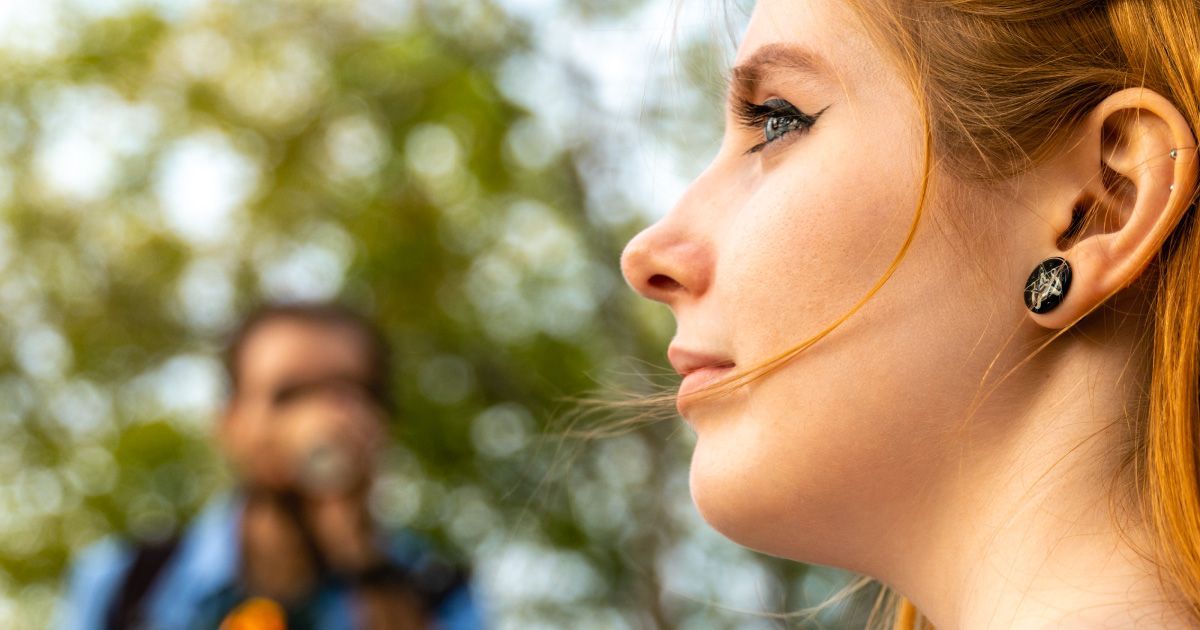The Significance of Healthy Vision in Learning

Read time: 6 minutes
Your eyes are crucial to your academic success. The modern educational landscape, dominated by extensive reading, computer use, and digital devices, places unique strains on your eyes. This guide, crafted from the perspective of eyecare professionals, is designed to help you maintain optimal eye health while juggling the demands of college life. From understanding the impact of vision on learning to addressing common challenges and offering practical tips, this article equips you with the knowledge needed to balance your academic pursuits with proper eye care.
Did you know that about 80% of the information you absorb during your studies flows through your eyes? Your eyes play a crucial role in reading, observing visual materials, and engaging with educational content.
Visual Learning Dominance
Visual Dominance refers to the phenomenon where one eye, called the dominant eye, takes precedence over the other in visual processing. It is part of the visual system's way of prioritizing information from one eye over the other, especially in situations where there may be discrepancies between the images seen by each eye.
In most individuals, one eye is dominant, and the brain relies more heavily on the visual input from that eye when constructing the perception of the surrounding environment. This dominance is influenced by various factors, including the alignment of the eyes, the quality of the visual input, and neural processing in the brain.
Visual dominance plays a crucial role in activities that require depth perception and accurate spatial judgment, such as aiming, catching, or even reading. Identifying the dominant eye is important in certain fields or sports activities, where precision and coordination are essential.
The Interconnection of Vision and Academic Performance
Undetected vision issues can significantly impede academic performance. Suboptimal vision may lead to difficulties in reading, comprehension, and sustained concentration, impacting your overall learning experience.
The interconnection of vision and academic performance is a multifaceted aspect of a student's overall well-being. Vision plays a pivotal role in the learning process, influencing various academic skills and activities.
Here are key points highlighting the relationship between vision and academic performance:
- Visual Acuity: Clear and accurate vision, known as visual acuity, is fundamental for reading, writing, and recognizing details on the board or in educational materials. Uncorrected refractive errors, such as nearsightedness or farsightedness, can lead to difficulties in focusing on written or projected content.
- Reading and Comprehension: Efficient vision is essential for reading fluency and comprehension. Students with visual challenges may struggle with tracking lines of text, leading to slower reading speeds and reduced understanding. Eye teaming and convergence skills are critical for coordinating the eyes to work together, ensuring smooth and comfortable reading experiences.
- Visual Processing: Visual processing involves the brain's interpretation of visual information. Visual perception skills, like visual discrimination and visual memory, contribute to recognizing letters, words, and patterns. Difficulties in visual processing can affect a student's ability to recognize and recall information accurately.
- Eye Movements: Rapid and accurate eye movements, known as saccades, are crucial for scanning and navigating written content. Inefficient eye movements can lead to losing one's place while reading or difficulties following instructions.
- Near Vision and Screen Time: With the increased use of digital devices in education, near vision and screen-related challenges have become more prevalent. Prolonged screen time can contribute to digital eye strain, characterized by symptoms like eye fatigue, headaches, and difficulty focusing.
- Comprehensive Eye Exams: Regular eye examinations are essential for identifying and addressing vision-related issues early on. Comprehensive eye exams assess visual acuity, eye teaming, eye movements, and other aspects of visual function.
- Impact on Learning Skills: Vision problems can have a cascading effect on various learning skills, including handwriting, attention, and overall academic achievement. Undetected vision issues may be misconstrued as learning disabilities or attention disorders.
- Classroom Environment: Classroom lighting, seating arrangements, and board visibility can impact a student's visual experience. Adequate lighting and optimal seating help reduce eye strain and support optimal vision for learning.
In summary, the interconnection between vision and academic performance is intricate and vital. Early detection of vision issues through comprehensive eye exams and proactive management contribute to creating an optimal learning environment for students. Addressing visual challenges enhances academic success, supports overall well-being, and fosters a positive attitude towards learning.
Common Eye Health Challenges for Students
Digital Eye Strain: With the prevalence of digital devices, you're likely familiar with digital eye strain. Prolonged exposure to computers, tablets, and smartphones can lead to eye fatigue, headaches, and dry eyes.
- Myopia (Nearsightedness): Nearsightedness, or myopia, is a common refractive error among students. Extended periods of reading and screen time may contribute to the development or progression of myopia.
- Accommodative Issues: Frequent shifts in focus between textbooks, screens, and classroom boards can lead to accommodative issues. You may experience eye strain as you struggle to adjust focus between different distances.
- Binocular Vision Disorders: Conditions like convergence insufficiency, where the eyes have difficulty working together at close distances, can impact your ability to read and comprehend written material.
- Dry Eye Syndrome: Extended periods of focused reading or screen use can reduce blink rates, contributing to dry eye symptoms. Inadequate tear production and poor tear quality may result in discomfort and vision fluctuations.
Strategies for Maintaining Healthy Eyes During Studies
- Regular Eye Exams: Routine eye exams are paramount for early detection and management of potential vision issues. Eyecare professionals can assess visual acuity, screen for refractive errors, and identify conditions that may affect your learning.
- Adhering to the 20-20-20 Rule: To mitigate digital eye strain, consider following the 20-20-20 rule: take a 20-second break to look at something 20 feet away every 20 minutes, allowing your eyes to relax.
- Proper Lighting and Ergonomics: Creating a well-lit study environment with adequate lighting helps reduce eye strain. Ensuring screens are positioned at eye level and maintaining good posture are essential components of a conducive study area.
- Protective Eyewear: For activities with potential eye injury risks, such as laboratory work or sports, utilize appropriate protective eyewear to prevent injuries.
- Balanced Nutrition: A well-rounded diet contributes to overall eye health. Foods rich in vitamins A, C, and E, as well as omega-3 fatty acids, support optimal eye function.
- Staying Hydrated: Proper hydration is crucial for maintaining tear film quality and preventing dry eye symptoms. Prioritize staying hydrated throughout the day.
Addressing Specific Eye Health Challenges
- Managing Myopia: For students with myopia, corrective lenses like eyeglasses or contact lenses can provide clear vision. Interventions like orthokeratology or myopia control lenses may help slow the progression of myopia.
- Vision Therapy: Students experiencing binocular vision issues may benefit from vision therapy. This structured program, overseen by an eyecare professional, aims to improve coordination of eye movements and focus.
- Managing Digital Eye Strain: Implementing the 20-20-20 rule, adjusting screen brightness, and using artificial tears can alleviate symptoms of digital eye strain. Blue light-blocking coatings on eyeglasses or screen filters may also be beneficial.
- Dry Eye Management: Managing dry eye involves lifestyle adjustments, including taking frequent breaks, performing blinking exercises, and using artificial tears. In more severe cases, prescription medications or in-office procedures may be recommended.
The Role of Eyecare Professionals
Your Urban Optiks Optometry eyecare professionals play a pivotal role in supporting your overall well-being during the educational journey. Through comprehensive eye exams, accurate prescriptions, and targeted interventions, they contribute to enhanced visual comfort, academic success, and a positive learning experience.
The Takeaway
Prioritizing eye health is foundational to your academic journey. By understanding common challenges, implementing preventive measures, and seeking timely professional care, you can optimize your vision for successful learning. Your Eyecare professionals serve as essential allies, ensuring you navigate your college path with clear and comfortable vision, ready to absorb the knowledge that awaits you.
Share this blog post on social or with a friend:
The information provided in this article is intended for general knowledge and educational purposes only and should not be construed as medical advice. It is strongly recommended to consult with an eye care professional for personalized recommendations and guidance regarding your individual needs and eye health concerns.
All of Urban Optiks Optometry's blog posts and articles contain information carefully curated from openly sourced materials available in the public domain. We strive to ensure the accuracy and relevance of the information provided. For a comprehensive understanding of our practices and to read our full disclosure statement, please click here.


















